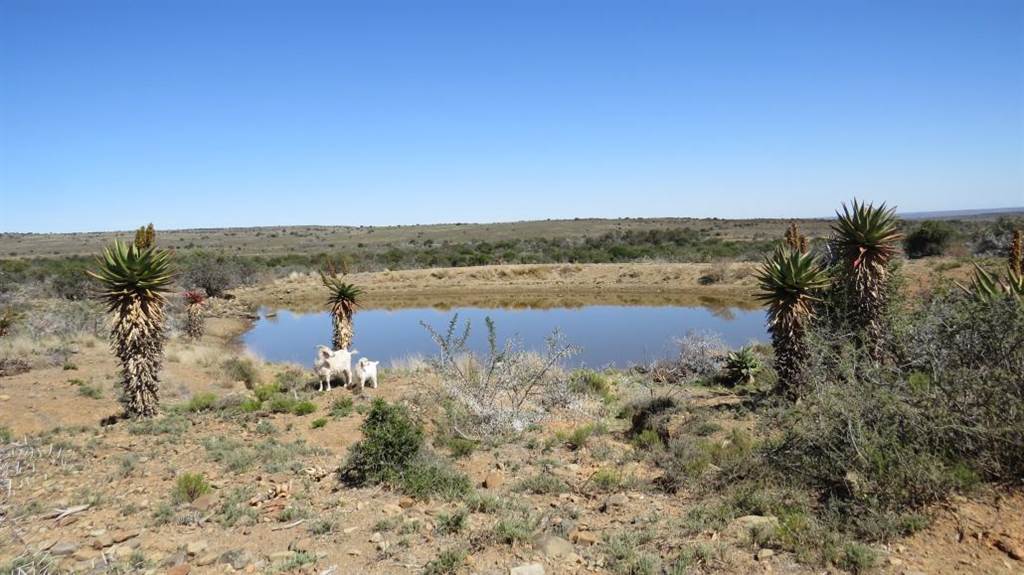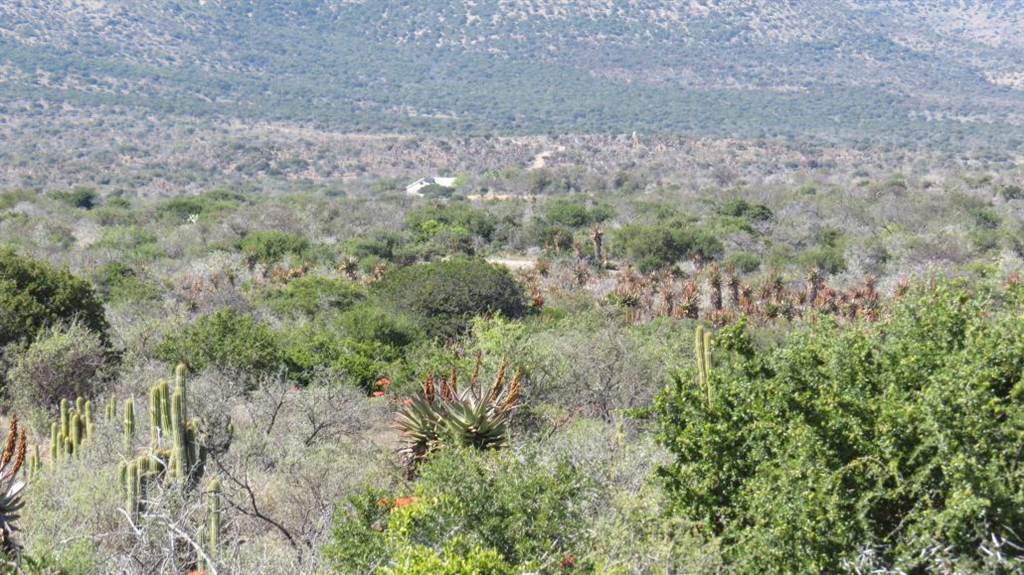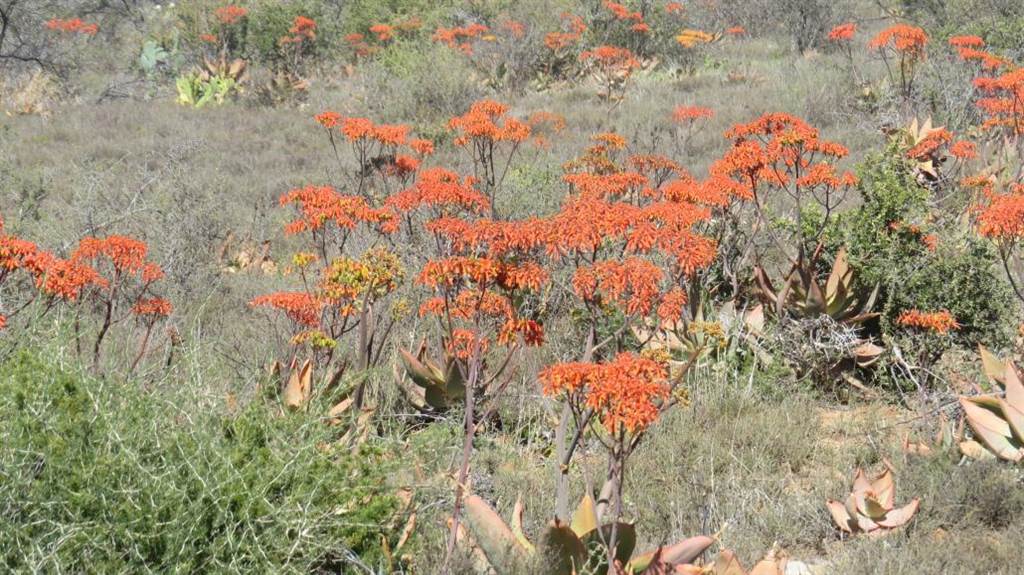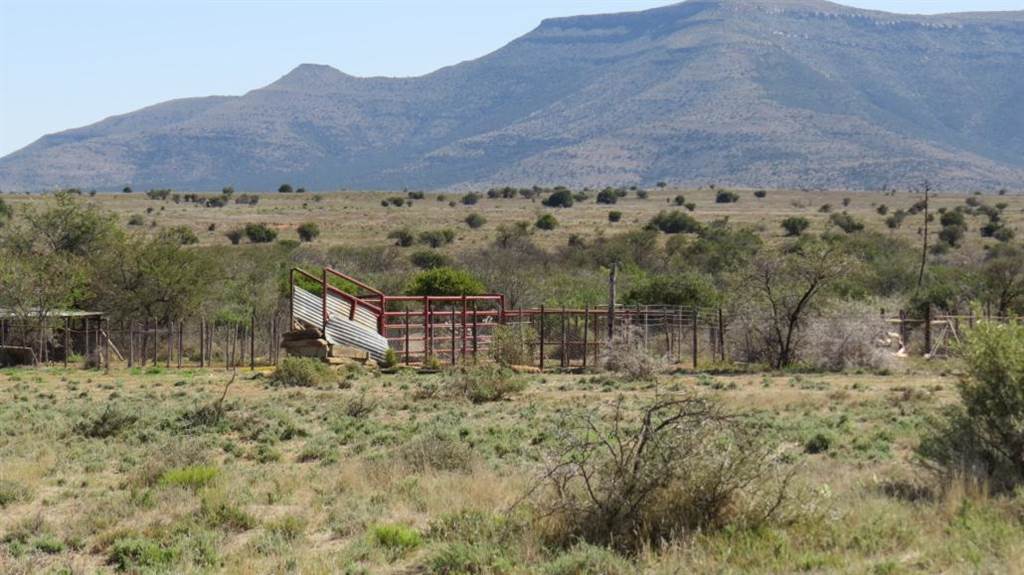The combined property has an area of 3 377.9913 ha.
The property comprises 16 veld grazing camps, 4 lambing camps and 2 land camps and is commonly known as Wilgerfontein with a total extent of 3 377,9913 ha.
The current land use of the subject property involves livestock farming and the sale of the products of livestock.
Irrigation / Lands
An area of approximately 2 ha is under permaset irrigation with fodder crops planted.
The irrigation water is obtained from a borehole fitted with a submersible pump and solar panels.
A plastered/painted brick structure with mostly timber floors under pitched corrugated iron roof. Accommodation comprises a lounge, dining room, TV room, 4 bedrooms, 2 bathrooms, pantry, storeroom and kitchen. In fair general state of repair. Modest finishes throughout with a combination of concrete and timber flooring and rhinoboard ceilings.
Double garage / stores and numerous sheds and stores.
The property has no Telkom lines, and Eskom power is not available but there is sufficient solar energy systems in place. Cellular reception is possible on some areas of the farm.
The subject property receives no municipal services.
Water - household water is obtained from a borehole fitted with submersible pump.
Stock water is supplied the above borehole as well 4 other boreholes fitted with windmills.
Stock water is supplemented by several earthen stock water dams constructed strategically to catch run-off rainwater.
VEGETATION MANAGEMENT:
It is not the purpose of this document to prescribe a detailed veld management system for the subject property.
It is however deemed prudent to highlight a few principles of the management of the mostly Karoo vegetation on the subject property.
Karoo veld is composed of 5 different components, namely grasses, karoo bushes, trees, shrubs and ephemerals (opslag) occurring in
various proportions in different areas.
Although the karoo veld contains very different vegetation components, these are not utilised independently enough by different animal types to enable their management requirements to be achieved using independent management strategies.
This is due to the karoo bush component forming the major dietary component of both grazers and browsers.
Therefore, the recommended management of Karoo veld attempts to satisfy the management requirements of each vegetation component in a single management approach based primarily on the requirements of the palatable karoo bush component.
This approach incorporates a rotational resting programme, but also specifies detailed veld management guidelines regarding rotational grazing.
The prescriptive aspects of this approach are based on the management guidelines emanating from the growth characteristics and response to defoliation of karoo plants. The management approach for karoo veld is presented in the form of an algorithm that identifies the steps that should be taken to achieve the objective.
For more detail on the algorithm the reader is referred to Veld Management in the Eastern Cape compiled by the Department of Agriculture Eastern Cape and edited by JE Danckwerts and WR Teague.
GRAZING AND CARRYING CAPACITY:
The Grazing Capacity of a property is determined by its veld type(s), the composition of its vegetation and the status of its plant cover.
Climate is an underlying factor, and the quality of management plays a vital and immediately visible role. It is expressed as the area of grazing land (in hectares) required to support one LSU (large stock unit) into perpetuity without diminishing the ability of the veld to maintain its productivity.
An LSU is defined as one 450 kg animal gaining a mass of 500g per day. However, the numerical estimates of grazing capacity should be seen as average guidelines only, as they are affected by rainfall, stock water provision, the type, depth and condition of the soil, land gradients, palatability and diversity of the plant species, cover and density, animal types and ratios, camp sizes and layout, veld management
expertise and more. This means that, while being an essential yardstick grazing management, the farmer should be aware that the effective grazing capacity can vary greatly between even consecutive years, and stocking rates have to be adjusted to optimise the productivity of the land given the conditions pertaining during a specific year.
Carrying capacity refers to the combined contribution of grazing capacity as well as the forage producing capacity of a property, i.e. planted pastures.
There are approximately 3 ha dry lands and 2 ha irrigated lands on the farm. On the dry lands if planted to permanent pastures a grazing capacity
of 0.5 LSU per ha is estimated. That gives 1.5 Large Stock Units on the lands. Turning to the irrigated lands, a grazing capacity of 4.5 LSU''s per ha is
estimated if the lands were planted to permanent pastures. That equates to 13.5 LSU''s on the irrigated lands.
The carrying capacity of the subject property is therefore estimated to be 1.5 + 13.5 + 232.6 = 243.1 Large Stock Units.
The grazing capacity of the subject property varies between 13 and 16 ha per LSU, say 14.5 LSU per ha. On the area of natural vegetation
(approximately 3 372 ha) it means that 232.6 Large Stock Units can be accommodated on the veld.
TOPOGRAPHY:
The topography is mostly flat undulating but steep in places, and most areas on the farm are accessible with a normal LDV.
However for some of the elevated sections, a 4 x 4 vehicle is needed.
CLIMATE:
Somerset East normally receives about 348mm of rain per year, with most rainfall occurring mainly during autumn. It receives the lowest rainfall (10mm) in July and the highest (53mm) in March.
THE OPPORTUNITY
The farm offers an opportunity for existing farmers to extend their current operations with the acquisition of this property or for a new farmer to gain entry into farming in this area of the Eastern Cape where property owners still enjoy a quality life in a safe environment. The property also offer possible future income from carbon credits due to the fact that various areas on the farm is suitable for planting Spekboom under carbon contracts.
This is an opportunity not to be missed.









